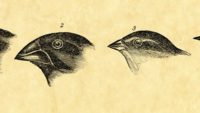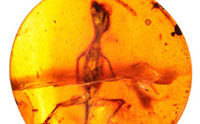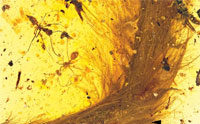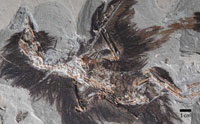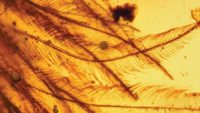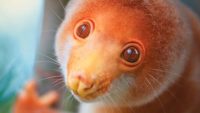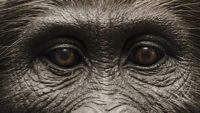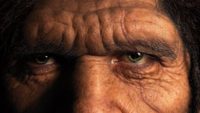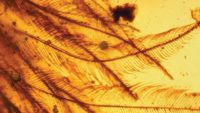Does the Miller–;Urey study prove abiogenesis or does it in effect revive the concept of spontaneous generation. …read more Read more here: creation.com
By Bodie Hodge Evolutionists are digging in the wrong place. When you don’t have the correct information, you can miss the mark significantly. …read more Source: AIG Daily
By Stephanie McDorman Research suggests that many natural venoms and poisons contain chemicals that can block pain without the adverse effects posed by opioid-based drugs. …read more Read more here: AIG Daily
By Dr. Elizabeth Mitchell Scientists from Northwestern University have developed a mathematical model that may help explain animal ornamental mysteries. …read more Read more here: AIG Daily
2016 revealed Cretaceous bird-feather proteins, original dinosaur-skin tissue, Triassic mosasaur blood vessels, and organic remnants from ancient fossil microbes. These four finds challenge scientists to question the popular model. More… …read more Read more here: icr.org
By Dr. Danny R. Faulkner In this article, Dr. Danny Faulkner tests a prediction based upon the flat-earth model and shows that the results of the test contradict the prediction. …read more Read more here: AIG Daily
The origin of these spectacular landforms is an enigma for long-age geology. …read more Read more here: creation.com
In a culture virtually convinced that the world is billions of years old, few people listen to evidence that clearly supports a young Earth. But that’s what the Bible teaches. And plenty of science, including four finds from 2016, backs up the Bible’s version of Earth history. More… …read more Read more here: icr.org
A skeptical reader is challenged to conduct an experiment for God’s existence. …read more Read more here: creation.com
In 2010, the BioLogos Foundation published an article that attempted to refute biblical creation. It was authored by old-Earth geologists Drs. Gregg Davidson and Ken Wolgemuth. Do their arguments hold up to scientific scrutiny? More… …read more Read more here: icr.org
Evolutionists fail to get around the conundrums apoptosis (programmed cell death) produces for their paradigm. …read more Read more here: creation.com
On December 8, 2016, a science news story broke that researchers had found entombed in mid-Cretaceous amber a dinosaur tail complete with “primitive plumage”—i.e., feathers. Is this claim credible? More… …read more Read more here: icr.org
A physicist is sure that dark matter sheds light on what happened to some of the world’s biggest extinct animals. …read more Read more here: creation.com
Ever since Dr. Mary Schweitzer’s 2005 discovery of preserved original dinosaur proteins and blood cells, many secular scientists have remained skeptical. How could dinosaur fossils retain original organic material after millions of years? A new ancient bird fossil reveals more unexpected original chemicals, adding fuel to the fierce debate within the scientific community. More… …read more Read more here: icr.org
By Dr. David Menton Once again the popular media is abuzz with a new evolutionary breakthrough. This time it is purported to be a feathered dinosaur tail trapped in amber! …read more Read more here: AIG Daily
By Mike Wild Hiding in Indonesia’s tropical forests is one of the cutest—and most creatively designed—creatures on the planet. …read more Read more here: AIG Daily
By Dr. Elizabeth Mitchell Dinosaurs and lagerpetids (their supposed evolutionary ancestors) have been found fossilized together, indicating they lived at the same time. …read more Read more here: AIG Daily
At least one scientist is up in arms about the ‘unfossilized’ hadrosaur bones from Alaska! …read more Read more here: creation.com
By Ken Ham The poster child of human evolution is the well-known Australopithecus afarensis fossil named Lucy, found in Ethiopia in 1974. Evolutionists believe she walked on two legs and therefore represents bipedality in one of our supposed ancestors. Well, according to a new study, Lucy was a tree climber. (By the way, while evolutionary beliefs continue to “evolve,” the Bible stays the same and continues to be confirmed by science over and over again.) Apparently special CT scans of Lucy’s limbs showed evidence of tree-climbing behavior: Other comparisons carried out in the study suggest that even when Lucy walked [More]
By Dr. Elizabeth Mitchell A study in Proceedings of the National Academy of Sciences suggests that the modern practice of Caesarean section is rapidly altering human evolution. …read more Read more here: AIG Daily
Geologist Steve Austin talks about his research career in Flood geology. …read more Read more here: creation.com
It’s one of Australia’s most curious creatures and-when first discovered-most thought it was a fraud. …read more Read more here: creation.com
By Dr. Elizabeth Mitchell The microbe LUCA is supposed to have been the Last Universal Common Ancestor of all living things. …read more Read more here: AIG Daily
Non-existent evolutionary ‘ghost lineages’ have been invoked to try to explain these fascinating flying reptiles. …read more Read more here: creation.com
Appealing to natural selection is no rescue device for evolutionists. Mutations simply accumulate too fast. …read more Read more here: creation.com
The recent spouting by some media outlets of a feathered dinosaur tail preserved in amber may be a case of counting chickens before they’re hatched. …read more Read more here: AIG Daily
By Dr. Andrew A. Snelling Remnants of a cypress forest were recently discovered off Alabama’s coast. What climate changes could explain such a massive rise in ocean level? …read more Read more here: AIG Daily





















